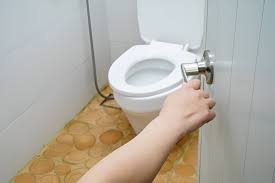A plunger is one of the most essential tools for dealing with clogged drains, but it can be incredibly frustrating when it doesn’t seal properly. If you’ve ever found yourself asking, ‘Why won’t my plunger seal?’ you’re not alone. This common issue can stem from several factors, ranging from the type of plunger you’re using to the condition of the drain itself. In this article, we’ll explore the reasons behind a poor seal and provide practical solutions to get your plunger working effectively again.One of the primary reasons a plunger doesn’t seal is due to an incorrect fit. Not all plungers are created equal, and using the wrong type for your drain can lead to ineffective results. For example:
- Cup plungers are designed for flat surfaces like sinks and bathtubs, but they often fail to create a proper seal on curved or irregular drains.
- Flange plungers, which have an extended rubber flap, are better suited for toilet drains but may not work well on other types of fixtures.
If your plunger isn’t sealing, check whether you’re using the right type for the job. Switching to a flange plunger for toilets or a cup plunger for sinks might solve the problem instantly.Another common issue is wear and tear on the plunger itself. Over time, the rubber can become stiff, cracked, or misshapen, preventing it from forming a tight seal. Here’s how to inspect your plunger:
- Examine the rubber for visible cracks or tears.
- Press the plunger against a flat surface to see if it flexes properly.
- Check if the edges are still soft and pliable.
If the rubber is damaged, it’s time to replace your plunger. A high-quality, durable plunger will last longer and perform better.
Sometimes, the problem isn’t the plunger but the drain. Debris, hair, or mineral buildup around the drain opening can prevent a proper seal. To fix this:
- Clean the drain area thoroughly before plunging.
- Use a wet rag to cover overflow holes in sinks or tubs, as these can disrupt suction.
- Ensure the plunger covers the entire drain opening without gaps.
Water level also plays a crucial role in creating effective suction. If there isn’t enough water in the toilet or sink, the plunger won’t be able to generate the necessary pressure. For best results:
- Add enough water to submerge the plunger’s cup or flange.
- Avoid overfilling, as this can cause spills.
- Use warm water to help loosen the clog.
Technique matters too. Many people make the mistake of pushing and pulling the plunger too aggressively, which can break the seal. Instead, follow these steps:
- Place the plunger over the drain and press down gently to expel air.
- Maintain a firm seal and use slow, steady motions.
- Focus on creating suction rather than force.
If you’ve tried all these solutions and your plunger still doesn’t seal, the clog might be too severe for a plunger to handle. In such cases, consider using a drain snake or calling a professional plumber. Persistent clogs could indicate deeper issues in your plumbing system.In summary, a plunger that doesn’t seal can be caused by using the wrong type, worn-out rubber, a dirty drain, insufficient water, or improper technique. By identifying the root cause and applying the right fix, you can restore your plunger’s effectiveness and tackle clogs with confidence. Remember, a well-maintained plunger is a homeowner’s best friend!

